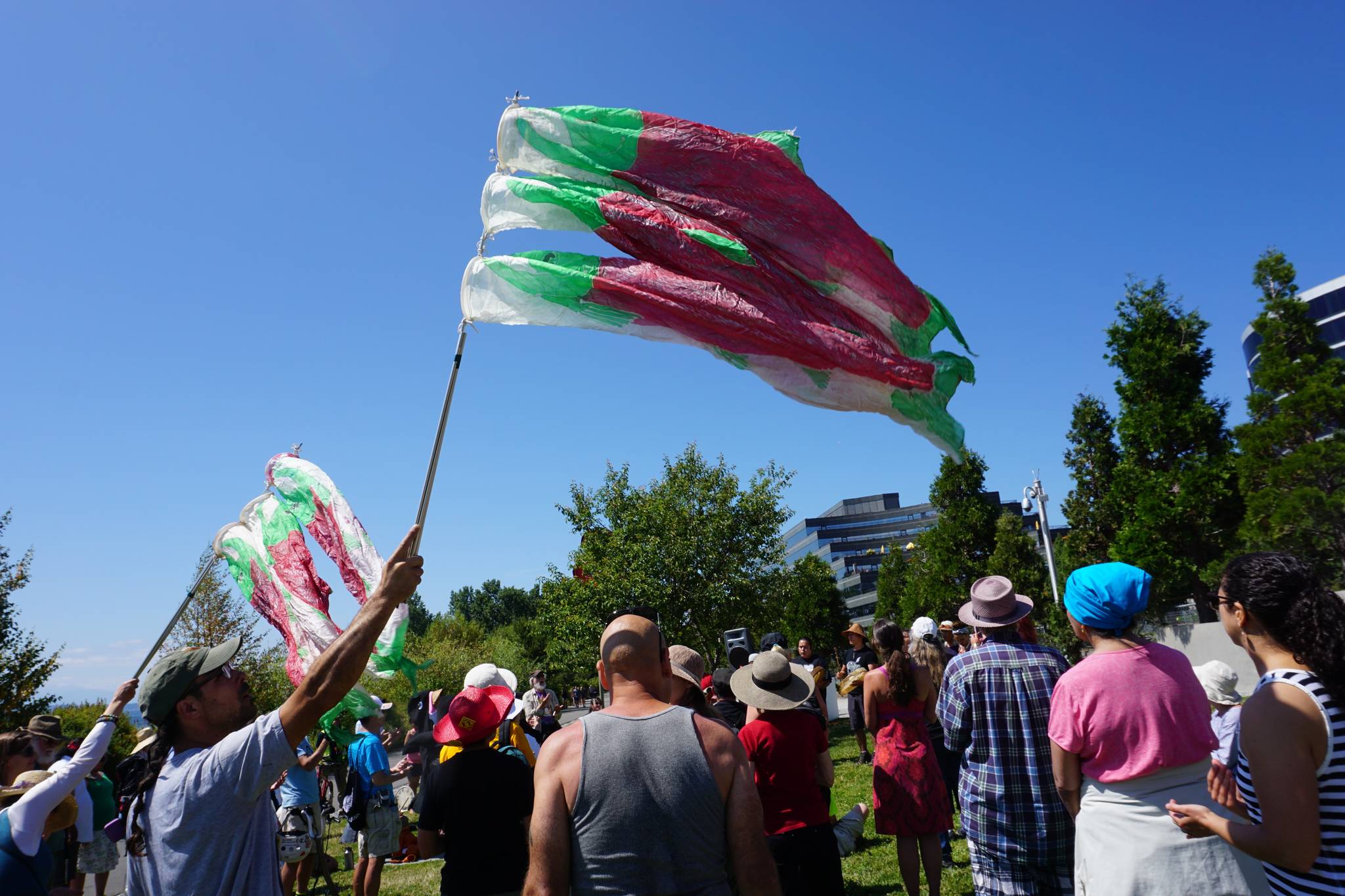In circumstances that strongly echo the protests at Standing Rock in North Dakota, the construction of a liquefied natural gas facility in the Port of Tacoma has inspired a wave of indigenous response.
If constructed, the facility will hold 8 million gallons of LNG—derived from natural gas extracted through fracking—and stand nearly as tall as the Tacoma Dome. The project has been years in the works, and is pitched by its backers as an environmentally friendly project. However, citing threats to Puget Sound and other local waters, the Puyallup Tribe and others are standing up against the project, invoking the tribe’s sacred connection to the waters that run off what the Puyallup call Mount Tahoma (Mount Rainier). Like activists at Standing Rock, they call themselves “water protectors,” and have adopted “water is life” as their slogan of resistance.
“For me, Standing Rock got me motivated,” Rachel Heaton, a leader of the Muckleshoot Tribe, said. “It got me involved. I came home and I saw the issues around me. It made us all start paying attention.”
In recent months, there has been continuous, vocal, and visual opposition against the facility.
“One day we are writing letters to a permitting agency, the next we’re speaking out at a city council meeting and the day after that we are protesting in the streets,” says Val Peaphon with Redline Tacoma, a grassroots group that formed in 2015 to protest a methanol refinery, which was also slated to be built in Tacoma. “Opposition grows every single day.”
The facility is being constructed in between parcels of the Puyallup Tribe’s reservation, a location that the tribe says will result in harm to their sacred waters and interference with their “right to fish” treaty.
A walk from Seattle to Tacoma, organized by the Protectors of the Salish Sea, began Friday in the Olympic Sculpture Park and ended in Tacoma on Sunday. Organizer Paul “Che oke ten” Wagner said the goal was to bring attention to a wide range of threats to Puget Sound. Along with the LNG plant, Wagner and representatives of other native nations are concerned about the Kinder Morgan’s Trans Mountain Pipeline, which would bring nearly 350 additional oil tankers into the Salish Sea.
“If we lay complacent, this corporate government of Canada and the United States will absolutely rob our future,” Wagner said. “Their plan is to bring nearly 1 million barrels of oil to our shores, then traffic it through our sacred seas, per day. We should all be outraged.”
Leaders said on Friday that they also planned a ceremony at the Duwamish Longhouseas as part of the walk. There, tribal members would designate the Salish Sea as a whale sanctuary, a precursor to a ballot initiative to make the Salish Sea a whale sanctuary by law, said organizers. The walk was scheduled to end at the Port of Tacoma, in Puyallup Tribe territory, where participants would directly protest the LNG facility’s construction.
For many of the people in attendance, Standing Rock acted as a catalyst. Multiple people described it as a wake up call.
“Seeds got planted in the hearts of all of us that were there,” said Terry DuBeau, of Port Townsend, who traveled to Standing Rock last November.
For Wagner, opposition to the various fossil fuels projects is a unified mission.
“We have to stop it,” Wagner said. “Standing Rock has lit a fire through all people and that fire is still alive and still burning. We will stop that oil and that pipeline eventually. All of that is a part of that same work.”
news@seattleweekly.com








